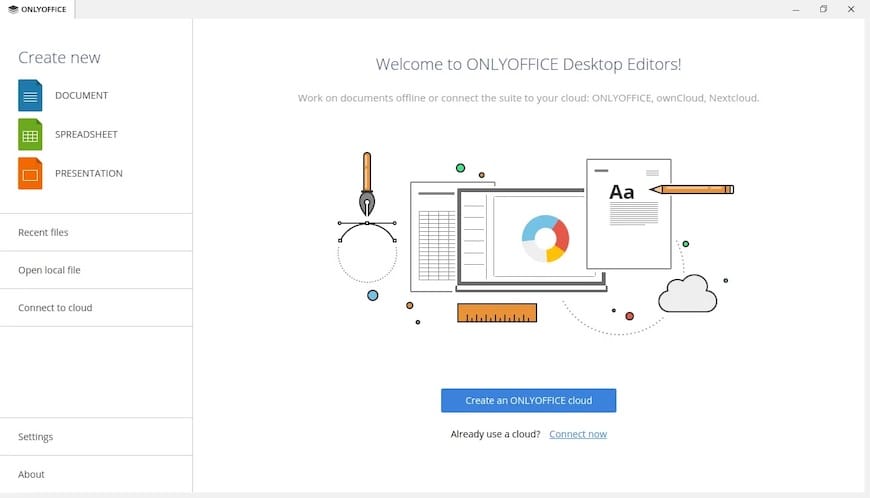How To Install OnlyOffice on openSUSE

In today’s digital age, having a reliable and feature-rich office suite is essential for productivity, especially for Linux users. ONLYOFFICE has emerged as a powerful alternative to traditional office suites, offering a comprehensive set of tools for document creation, editing, and collaboration. For openSUSE users, ONLYOFFICE provides a seamless experience that integrates well with the operating system’s ecosystem. In this guide, we’ll explore the various methods to install ONLYOFFICE on openSUSE, ensuring you have access to this versatile office suite.
What is ONLYOFFICE?
ONLYOFFICE is a robust, open-source office suite that offers a complete set of tools for document management, project management, and team collaboration. It includes applications for word processing, spreadsheets, and presentations, comparable to Microsoft Office or LibreOffice. What sets ONLYOFFICE apart is its cloud-based functionality, allowing for real-time collaboration and easy document sharing.
For openSUSE users, ONLYOFFICE brings several advantages:
- Cross-platform compatibility, ensuring seamless work across different operating systems
- A familiar interface for users transitioning from other office suites
- Advanced collaboration features, including real-time co-editing and commenting
- Integration with popular cloud storage services
- Regular updates and improvements, keeping the software current and secure
Compared to other office suites, ONLYOFFICE stands out for its focus on collaboration and cloud integration, making it an excellent choice for teams and individuals who frequently work on shared documents.
Prerequisites
Before we dive into the installation process, ensure that your system meets the following requirements:
- An up-to-date openSUSE installation (Leap or Tumbleweed)
- At least 2 GB of RAM (4 GB recommended for optimal performance)
- 1 GB of free disk space
- Administrator privileges or sudo access
- An active internet connection for downloading packages
It’s also a good idea to update your system before proceeding with the installation. You can do this by running the following command in the terminal:
sudo zypper updateInstallation Methods
There are three primary methods to install ONLYOFFICE on openSUSE:
- Using Snap
- Using Flatpak
- Using RPM packages
Each method has its advantages, and the choice depends on your specific needs and preferences. We’ll cover all three methods in detail, allowing you to choose the one that best suits your situation.
Method 1: Installing ONLYOFFICE via Snap
Snap is a universal package management system that simplifies software installation across Linux distributions. To install ONLYOFFICE using Snap, follow these steps:
Step 1: Enable Snap Support on openSUSE
If you haven’t already enabled Snap support on your openSUSE system, you’ll need to do so first:
sudo zypper addrepo --refresh https://download.opensuse.org/repositories/system:/snappy/openSUSE_Leap_15.2 snappy
sudo zypper --gpg-auto-import-keys refresh
sudo zypper install snapd
sudo systemctl enable --now snapd
sudo systemctl enable --now snapd.apparmorAfter running these commands, restart your system to ensure all changes take effect.
Step 2: Install ONLYOFFICE using Snap
Once Snap is set up, installing ONLYOFFICE is straightforward:
sudo snap install onlyoffice-desktopeditorsThis command will download and install the latest version of ONLYOFFICE Desktop Editors.
Step 3: Verify the Installation
To confirm that ONLYOFFICE has been installed correctly, you can run:
snap list | grep onlyofficeThis should display information about the installed ONLYOFFICE package.
Method 2: Installing ONLYOFFICE via Flatpak
Flatpak is another universal package management system that offers sandboxed applications. Here’s how to install ONLYOFFICE using Flatpak:
Step 1: Set up Flatpak on openSUSE
If Flatpak isn’t already set up on your system, you can install it with these commands:
sudo zypper install flatpak
sudo flatpak remote-add --if-not-exists flathub https://flathub.org/repo/flathub.flatpakrepoAfter running these commands, restart your system to ensure Flatpak is fully operational.
Step 2: Install ONLYOFFICE using Flatpak
With Flatpak set up, you can install ONLYOFFICE with the following command:
flatpak install flathub org.onlyoffice.desktopeditorsFollow the prompts to complete the installation process.
Step 3: Confirm Successful Installation
To verify that ONLYOFFICE has been installed correctly via Flatpak, run:
flatpak list | grep onlyofficeThis should display information about the installed ONLYOFFICE application.
Method 3: Installing ONLYOFFICE via RPM Package
For users who prefer traditional package management, installing ONLYOFFICE via RPM is an excellent option. Follow these steps:
Step 1: Add the ONLYOFFICE Repository
First, add the official ONLYOFFICE repository to your system:
sudo zypper ar https://download.onlyoffice.com/repo/desktop/opensuse/main/noarch/ onlyofficeStep 2: Update Package Lists
Refresh your package lists to include the new repository:
sudo zypper refreshStep 3: Install ONLYOFFICE Desktop Editors
Now, you can install ONLYOFFICE Desktop Editors using zypper:
sudo zypper install onlyoffice-desktopeditorsThis command will download and install ONLYOFFICE along with any necessary dependencies.
Step 4: Verify the Installation
To confirm that ONLYOFFICE has been installed correctly, you can check the installed version:
rpm -q onlyoffice-desktopeditorsThis should display the version number of the installed ONLYOFFICE package.
Launching and Configuring ONLYOFFICE
After successfully installing ONLYOFFICE, you can launch it from the application menu or by running onlyoffice-desktopeditors in the terminal.
When you start ONLYOFFICE for the first time, you may be prompted to:
- Choose your preferred language
- Set up cloud storage integration (optional)
- Customize the interface theme
- Configure automatic updates
Take some time to explore the settings and customize ONLYOFFICE to suit your workflow. You can access additional configuration options by clicking on the “Settings” icon in the main interface.

Troubleshooting Common Installation Issues
While installing ONLYOFFICE on openSUSE is generally straightforward, you might encounter some issues. Here are solutions to common problems:
Dependency Conflicts
If you encounter dependency conflicts during installation, try the following:
- Update your system:
sudo zypper update - Clean the package cache:
sudo zypper clean - Retry the installation
Repository Errors
If you’re having trouble accessing the ONLYOFFICE repository, ensure that:
- Your internet connection is stable
- The repository URL is correct
- Your system’s date and time are set correctly
Permission Problems
If you encounter permission issues, make sure you’re using sudo when necessary and that your user account has the appropriate privileges.
Updating ONLYOFFICE
Keeping ONLYOFFICE up to date is crucial for security and to access the latest features. The update process varies depending on your installation method:
- For Snap installations:
sudo snap refresh onlyoffice-desktopeditors - For Flatpak installations:
flatpak update org.onlyoffice.desktopeditors - For RPM installations:
sudo zypper update onlyoffice-desktopeditors
It’s recommended to check for updates regularly or enable automatic updates in the ONLYOFFICE settings.
Congratulations! You have successfully installed OnlyOffice. Thanks for using this tutorial for installing the OnlyOffice on openSUSE system. For additional help or useful information, we recommend you check the OnlyOffice website.